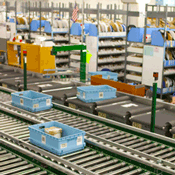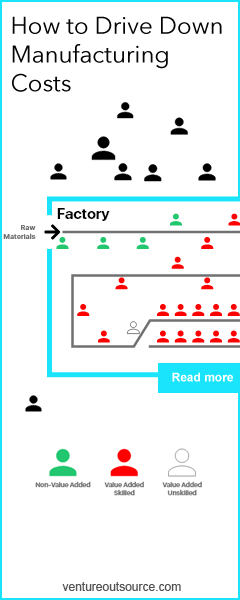 The only thing that is truly hard about hardware is creating an electronics product the market wants to buy: worry about the product market fit. Entrepreneurs, founders, startups and OEMs bringing new products to market fail to focus on the real problems, which can be solved, when it comes to making hardware easy.
The only thing that is truly hard about hardware is creating an electronics product the market wants to buy: worry about the product market fit. Entrepreneurs, founders, startups and OEMs bringing new products to market fail to focus on the real problems, which can be solved, when it comes to making hardware easy.
The concepts for creating market-leading products that wow and suitable components with the right specs, and the sequential tasks for designing a product and bringing that product to market.
Electronics distributors are the biggest barrier to creating your product. Whether its finding components with the right specs and price, distributors are the single, biggest obstacle for every entrepreneur, founder, startup and enterprise OEM company wanting to create and bring a new product to market in a timely manner and at a competitive price. And keeping things this way is in the electronics distributor’s best interests.
SEE ALSO
Hardware request-for-quote (RFQ) best practices
Hardware startup outline
Steps for choosing contract electronics solutions partners
Distributors want to play gatekeeper on components inventory access, and inventory amounts, and pricing.
But what happens to hardware product pricing when entrepreneurs, founders, startups and OEMs get access to a central, materials exchange for all components and parts from every known non-OEM components and semiconductor manufacturer on the planet?
Give electronics hardware professionals and designers the information and tools they need for better decision-making and the market thrives with real electronics design innovation, hardware products launch faster and with lower design costs.
WHITE PAPERS
Plan for electronics prototype and new product development
Checklist for new product introductions (NPI)
Flowchart for electronics NPI in EMS
NPI launch specs in contract electronics
Meanwhile, how will electronics hardware products come together and get to market if BOM and MCOGs (with full freedom for design options and materials alternatives) can be identified and fed directly to product designs based on the hardware company’s feature-rich wish list without constraint from distributors? All while having confidence, knowing materials availability is accurate and prices are truly optimal.
How will the hardware supply chain look if hardware companies and OEMs apply pressure to purchase direct from semiconductor firms? What will the supply chain look like if semiconductor firms want more brand recognition and break away from the dying grasp distributors hold today?
Semiconductor firms need brand recognition. The smaller semiconductor firms do not have the power to say not to OEM NDAs so they rely on the success of OEMs, with distributors pushing their components above ‘preferred’ partners.
RELATED
How semiconductor chipset vendors get OEM AVL approval
How semi vendors win OEM/EMS POs
Electronics distribution ripe for disruption
Electronics distributor pressure to innovate increases
OEMs want rock bottom pricing and need to cut out the EMS provider’s influence on component pricing, and distributors altogether, and they’re doing a portion of this today to some degree, and they would do more if they did not feel some loss of hidden insurance, or some value add they feel they might be receiving. (Search contract electronics solutions providers)
The components cost to OEMs to get semiconductor pricing is rolled into the costs of dealing with distributors. Entrepreneurs, founders and investors are paying for this and so is the marketplace with delayed product launches, and higher FGI costs.
The greatest barrier to
real hardware innovation is
today’s electronics distributor
Also in the middle of this are the contract electronics EMS providers trying to do what’s required per the OEM’s BOM and AVL. Plus, the majority of EMS providers must fight among the scraps left behind by the Tier-1 EMS providers who have 75% of the buying power.
In grasping hold to retain any power they can find, electronics distributors will claim they protect the supply chain against counterfeits in the marketplace but this argument is a low-cost process that will soon be automated.
Electronics distributors are on the lowest level on the hierarchy of the electronics supply chain:
- Semiconductor firms design and innovate
- OEM hardware firms design and innovate
- EMS providers create and execute operations
- Distributors connect parties and move parts around
Read more about why electronics distributors only hurt entrepreneurs, founders, hardware investors, and OEMs.
Electronics hardware entrepreneurs, founders and startups take a look at Hardware Massive to meet locally, connect globally with a hardware startup ecosystem, and Hardware Pioneers in Europe. Also, some questions for hardware startups seeking funding can be found here. Investors and private equity firms interest in hardware startups, see some suggestions for evaluating hardware investments here.
Search Electronics Services by End Market
Aerospace & Avionics | Defense & Military | Industrial | Consumer Devices | Computing | Medical | Clean, Green Technology | Automotive | Networking Equipment | Telecom | Servers & Storage | Peripherals
Get list of EMS manufacturers for your requirements (Its free)
Save time and money. Find quality EMS manufacturers. Fast. Venture Outsource has a massive, global database of contract electronic design and manufacturing capabilities. Speak with a Provider Advisor.
“Was able to very quickly find details on the important elements of setting up EMS and ODM partnerships, talked with an advisor for personalized info on quality providers matching our requirements while getting up to speed quickly about the industry and connect with key staff from like-minded companies and potential partners. Great resource.”
— Jeff Treuhaft, Sr. Vice President, Fusion-IO
Advisors tell you matches we find for your needs, answer your questions and, can share EMS industry knowledge specific to your industries and markets.








